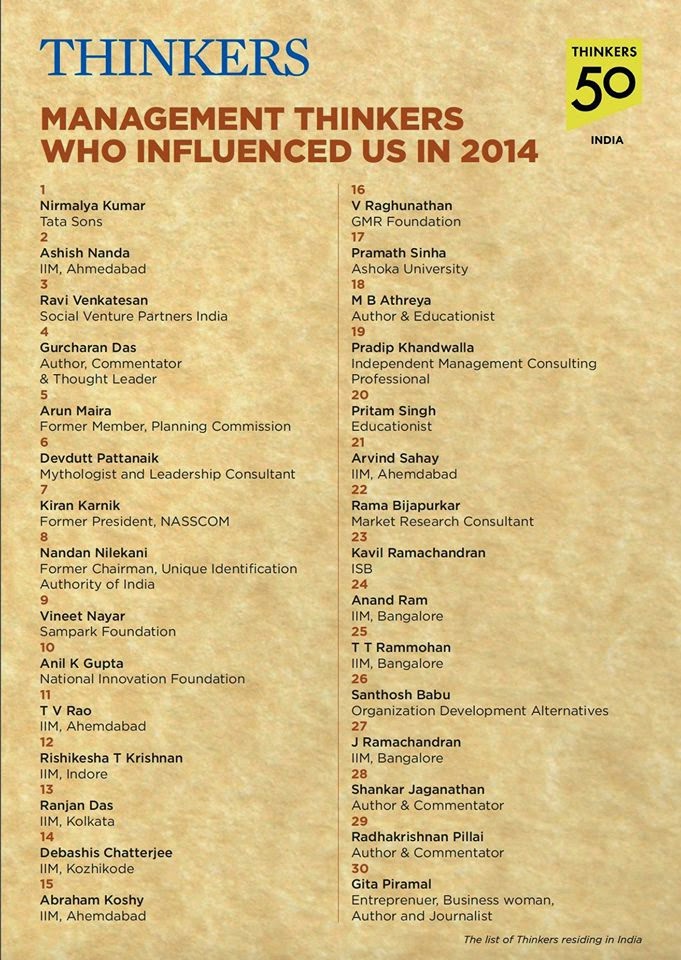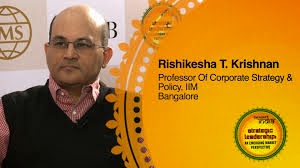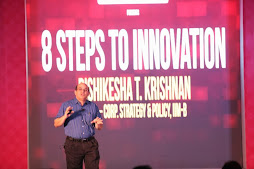With a new government at the helm, this is the time for wish-lists
and advice as to how it can make a major impact. Here’s my two pennies worth on
what should be the government’s priorities if it wants to promote
technology-driven innovation and entrepreneurship.
Ease of Doing Business
India routinely does badly on the World Bank’s survey on
ease of doing business. But, from talking to entrepreneurs, I get the sense
that setting up a new services business is fairly straightforward, that’s why
we see so many new service businesses springing up all the time. While there is
always scope for improving the time taken to set up a service business, the
real issue is with manufacturing businesses.
Most of the barriers to set up a new factory are at the
state level, but the central government could help by creating a blueprint for
a genuine single window approval system (possibly by studying the relatively
more efficient states) and diffusing it to other states. Perhaps the centre can
even incentivize states to adopt such a system (through a special grant?).
Availability of stable power is another important framework
condition to encourage entrepreneurship in manufacturing as few entrepreneurs
can afford to invest in large gensets for a fledgling enterprise.
Finally, while ease of setting up a business is important,
ease of closing a business is equally salient. That’s an area for immediate
attention.
Strengthen support for technology development
India’s success in services has obscured the fact that we
are slipping backwards in several technology areas. In both more mature areas
like electronics as well as important new areas like nanotechnology and new
energy technologies, India is far away from being a serious player.
Over time, the government’s support programmes for
technology development by industry have stagnated, and in some cases withered
away. The only exception has been in Biotechnology where a robust set of
support programmes is in place thanks to the initiatives of Dr. MK Bhan when he
was Secretary of the Department of Biotechnology (DBT). [See my earlier post on
Dr. Bhan’s initiatives at DBT.]
Some features of the DBT’s initiatives are (1) close
involvement of industry in the design of support programmes; (2) willingness to
support small firms with outright grants for genuinely innovative technology
development efforts; (3) a variety of schemes tailored to meet the size and
needs of different biotech enterprises; (4) a strong delivery mechanism (a
separate Section 25 company) to execute the programmes. These could either be
replicated in other sectors, or the Department of Science and Technology
charged with rolling out large horizontal programmes along these lines.
There is an urgent need to start at least ten national
collaborative R&D platforms involving industry, academia and research
institutions to support technology development and commercialization in areas
of critical importance to the country. Previous experiences such as the NMITLI
programme of CSIR and the CAR programme of the office of the Scientific Advisor
to the Cabinet can be drawn upon to design effective collaborative programmes.
[See my earlier post on collaborative R&D programmes.]
Public procurement plays an important role in government
support for local technology development. Government should give short-term
preferential procurement to products based on local technology, developed
specifically for Indian needs, which have been granted Indian patents. And, it
should play a proactive role in helping local firms meet pre-qualification
norms rather than using such norms to prevent local firms from participating in
government tenders.
Promote Application-oriented Research in Academia
There is frequent criticism that Indian academia is too
theoretical and lacks an application focus. Not enough research is done, and
whatever research there is tends to be esoteric and abstract. Genuine
application often involves crossing disciplinary boundaries, but Indian
academia works within tight disciplinary silos. Yet, we also know that
innovation in frontier areas has its seeds in academic research.
A first important step would be to recognize the importance
of application-oriented research in Indian academia. The most prestigious
science awards in India are the Bhatnagar awards, but these are based on
research alone. I hear that there is a committee to set up a similar set of
awards for translational research (this is the term in vogue for
application-oriented work), this needs to be expedited and efforts made to find
really outstanding people to be the first recipients of the awards.
Application-oriented criteria like patents, technology
transfer/commercialization need to be included in the faculty evaluation
process at our top institutions with some fungibility between these criteria
and publication-related criteria.
At least 2 -3 positions of Professors of Practice need to be
created in each department in an IIT or NIT which can be used to attract
researchers from industry on either a fulltime or adjunct basis. The criteria
for appointment of these professors of practice need to be different from those
applicable to regular faculty appointments with a greater focus on application
and commercialization. These professors of practice will also hopefully act as
a bridge between the institution and industry, and enhance communication
between the two.
Faculty should be encouraged to get involved in start-ups,
either directly or as mentors. All restrictions on such activity should be
removed. Strengthening of faculty evaluation processes within institutions will
help dispel any concerns of faculty members pursuing commercial interests at
the expense of their academic commitments.
Joint appointments need to be encouraged to promote
inter-disciplinary work. Inter-disciplinary academic programmes and research
projects can also help.
Inter-disciplinary work can also cross institutional
boundaries. A couple of existing programmes catalyzed by Dr. Bhan show how this
can happen – (1) the Stanford India Biodesign Programme brought Stanford Design
School, All India Institute of Medical Sciences and IIT Delhi together to
create a new generation of designers of biomedical equipment, and a whole slew
of new products; (2) the IISc-St. John’s Glue project brought together India’s
leading science institution and a leading centre for medical research. Though
located in the same city, these two premier institutions hardly used to
interact with each other. Such glue programmes/ projects are particularly
relevant to our country since we have a large number of high quality specialized
institutions but a small number of high quality multi-disciplinary
universities.
Some institutions have already set up tinkering labs to
enable students to experiment in a non-formal setting. The government should
give a one-time grant to the top 50 technology institutions to set up such
labs.
Summary: The Ten Point Agenda
[The views expressed here are the personal views of the author. Some of these ideas have been expressed before in different forms by others, and I thank everyone who has contributed.]

































